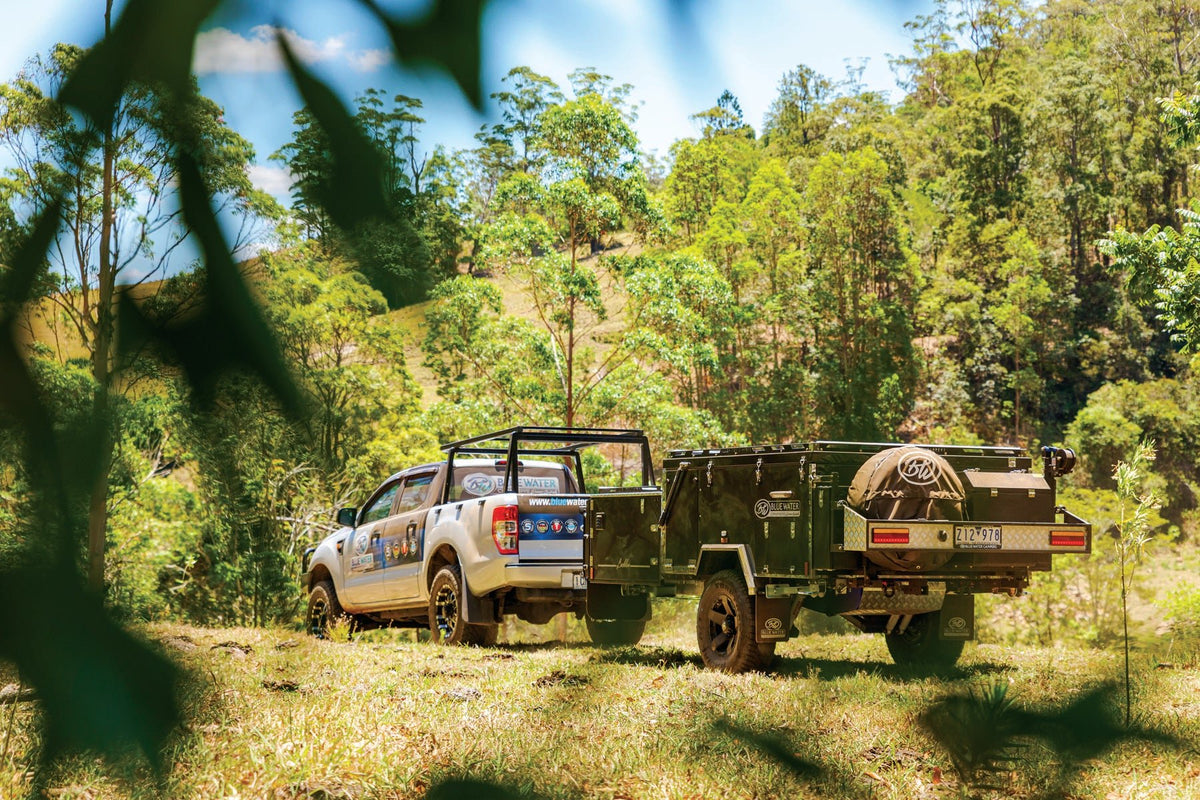
Behind the Brand: Bluewater Camper Trailers
|
|
Time to read 2 min
|
|
Time to read 2 min
When you spend two years living in a remote indigenous community in the NT, you develop a pretty good idea of what it takes to live off the grid. Geoff Haynes, the Workshop Manager at Bluewater Campers, once lived in Woolaning, between Litchfield and the Peron Islands.
“I was the mechanic and head of facilities,” Geoff says. “My wife and I were house parents and we ran a 25 acre, fully self-contained boarding school. We had our own shop that was used for students for work experience and providing supplies for boarding houses. That way we didn’t have to drive into Darwin; instead supplies were sent once a month.
“It was all off the grid. We had our own generators, water supply, and sewerage plant. The largest of the three generators was 190kW, the others were 60 and 120kW respectively. We had a ground-fed spring that ran through a filtration system — some of the best water in the Territory.”
The bedrooms in the community had air-conditioners, but not the living areas — these were too big. But as Geoff says, “All the windows were shutter windows; they’d get airflow, cross-ventilation.”
It’s no coincidence then that the “biggest windows in the industry” are in Bluewater’s campers. Geoff explains that “Cooling is really important, because off-grid, you’ve got no access to powered cooling, leaving you with just shade and airflow to rely on.”
The Lachlan has a combined battery capacity of 240Ah. In the Gold Coast, Geoff explained they’d been running the fridge since a few days before and that, over 18 hours without charging, charge had only dropped .7 of a volt.
“240 amp hours should last you 36 hours without charge, so long as you don’t go crazy and you economise,” Geoff says. “We recommend +4 for fridge, -4 for freezer temperatures. Of course if you’re charging you’ll go longer. The 200W solar panel puts out 10 amps and you can easily add another panel at the drawbar; the DC/DC charger can manage 25 amps of input.
“You need at least six hours of sunlight daily to maintain your batteries fully. On a given day you may not get full sun, but then you can catch up the next day. Solar should fill up more than you use in a 24 hour cycle. It’s all about tracking the sun.
“Outside of Woolaning, it was like what you see here; little low-lying scrub, an escarpment that ran to Wangi Falls nearby, the local swimming hole. We’d sometimes take the kids on school camp. When you take 60 kids camping, you need to know what to take. It was tent and camper trailer camping, with cooking and sleeping in the trailers.
“Water is another key thing. We put as much water in these as we dare,” Geoff says, pointing to the Lachlan. “There’s a 130L and 30L tank. You need two separate water sources.
“When you’re outback you never know when a stick or a rock will poke up. Because of that we protect our tanks to the utmost. Still it’s best to have a back-up.
“I recommend for campers to use the front tank for showering and the rear for drinking water. Top up the 130L for quality, and the separate tank for showering on bore water. Just make sure to rinse your tanks when you switch lines.
“As a family of six, you can go for a week on 80L, so 160L equates to two weeks worth for most families, so long as you’re not going too crazy with the shower.”
The off-grid capabilities of the Lachlan are made clear by the lifestyles people are living in them. As Geoff says: “One family are 18 months into a two year trip, living in a Bluewater camper. They’re carting their whole lifestyle with them.”
At the end of the conversation, Geoff had an important message to add.
“If you’re heading to an indigenous area, make sure you seek permission to be there. Take only photos and leave only footprints.”